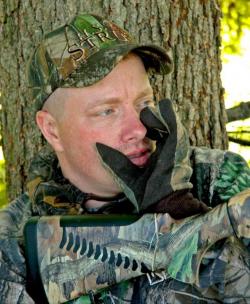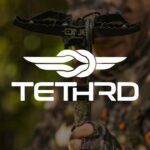LAST UPDATED: May 1st, 2015

“I lived in Piketown, Pennsylvania, and on this hunt, I was hunting with my dad,” Matt Morrett explains. “Although I grew up hunting with my dad, we had two very-different types of hunting. When my dad picked a turkey and decided to call with him, he might stay with that turkey until lunchtime. Even if the turkey quit gobbling, Dad wouldn’t leave that bird. But I was a run-and-gun type of turkey hunter. If I couldn’t get the turkey to come to me quickly, and the bird quit gobbling, I’d leave that bird and go hunt for a turkey that was more eager to respond to calling.
“Dad had taken a day off from work so that he and I could hunt together, which of course would rate as my favorite hunt of the year. After we’d hunted all morning long and were walking out of the woods, I told my dad, ‘Let me make one more stop here, and throw my calls out in this one area.’ We’d had a real bad morning and just hadn’t heard very many turkeys gobble. When I started cutting, immediately a turkey fired back with a loud gobble. Twenty minutes later we’d taken that 25-pound tom with an 11-inch beard and 1-1/4-inch spurs, a huge turkey for our section of the country. We had to quit hunting at noon but didn’t strike this gobbler until 11:30 a.m. Once we actually reached the turkey, I looked at my watch, which reported 11:50 a.m., just 10 minutes before quitting time. In the past, if I’d been out hunting and hadn’t heard any turkeys gobble all morning long, I would’ve just kept going to the house and not stopped and tried one more series of calls. I’d have given up.”
John E. Phillips has been fortunate enough to hunt with some of the greatest turkey hunters in the nation, and for more than 45 years, these masters of turkey hunting have continued to teach him better ways to take gobblers. But, while learning from the masters, he also wanted to know who has taught these veterans to successfully take turkeys every spring. All these outstanding turkey hunters have agreed that they’ve learned the most from the PhD gobblers they’ve hunted. So, Phillips has collected the stories of some of the greatest turkey hunters of our day and those PhD gobblers like the Piketown PhD Tom that have taught them their craft.
To learn more about PhD gobblers and how to hunt them from the masters of the sport, click here for “PhD Gobblers,” a new eBook from Amazon’s Kindle by John E. Phillips. Or, you can go to http://www.amazon.com/kindle-ebooks and type-in the name of the book to find it.
Matt Morrett Answers Some of the Questions He’s Most Asked at Turkey-Hunting Seminars:
* One of the 10-most-frequently-asked questions of Matt Morrett is, “What’s your favorite call to use when calling a turkey?”
Morrett explains, “My favorite call is a mouth diaphragm call, and I prefer a cutter-type call like H.S. Strut’s Ultra Cutter. I’ve learned how to control the volume on this call. I like having the call in my mouth, so my hands are free; and I believe I can make this call as realistic as it needs to be. But, I’ve always got at least two other calls, either a slate or a glass friction call and a box call like H.S.’s Ol Mama Hen or the Beard Collector, with me. On windy days and rainy days, you can get a little bit more volume out of friction calls than you can from diaphragm calls.”
*Another question Morrett is often asked is, “What’s your favorite time of the year to call turkeys – the beginning, the middle or the end of the season?”
Morrett says, “I prefer to hunt that first week of the season, but not the first day of the season. I like the second or the third day. I also like to hunt at the very end of the season, because then the gobbler won’t have any hens with him, and he’s easier to call. If I can pick the best time to hunt turkeys in any state, I’ll always pick the first week and the last week of the season.”
*Also, Morrett is asked often, “What’s your favorite time of the day to hunt turkeys?”
Morrett reports, “Like everyone else, I like to hunt turkeys the first thing in the morning when they fly-down off the roost. But, I’ve found my most-productive time generally is from 8:00 am. to 11:00 am. I like to hunt later in the morning, because when a turkey comes-off the roost, he usually flies-down and gets with his hens. But by 8:00 or 9:00 am, he’s usually lost those hens, is looking for companionship and is easier to call.”
Watch this video to see the author interviewing Matt Morrett on how to try and solve the problem of the gobbler that won’t come in that’s in John E. Phillips’ latest Amazon/Kindle book, “Turkey Hunting Tactics.”





